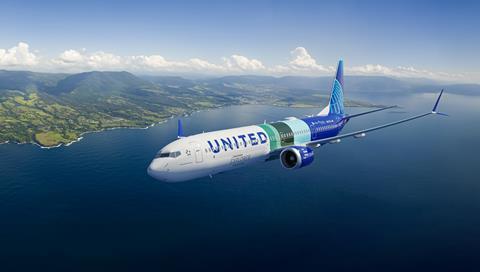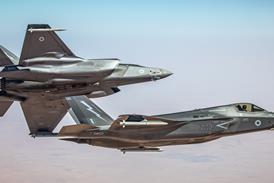Boeing remains hesitant to jump headlong into developing hydrogen-powered aircraft due to safety and technical challenges, despite widespread calls for aircraft developers to roll out clean-burning designs as quickly as possible.
Speaking on 23 July, Boeing chief technology officer Todd Citron noted that hydrogen’s flammability significantly exceeds that of traditional Jet A, creating safety concerns that will require much time to address.
Hydrogen also holds far less energy by volume than fossil fuels, meaning a hydrogen aircraft would need to carry more fuel (and be much larger) than conventional types with the same range.

“Is it safe and certify-able? That’s a really big question,” says Citron.
He was among three Boeing executives who laid out the company’s sustainability efforts during the Farnborough air show. Boeing competitor Airbus has taken a more-favourable view of hydrogen, saying it intends to bring a small hydrogen-powered aircraft to market in the mid-2030s.
Although hydrogen emits only water when burned or used to produce electricity, Boeing chief sustainability officer Brian Moran says “98% of hydrogen is not green” – meaning not produced using renewable energy. Using anything but green hydrogen could end up “making the problem worse, not better”.
Challenges aside, Boeing has studied hydrogen propulsion for several decades, having flown a demonstrator aircraft starting in the early 2000s. The company’s ongoing work concerns studies related to integrating hydrogen-propulsion architecture into aircraft.
Separately, in partnership with United Airlines and NASA, Boeing recently evaluated how different fuel types affect the formation of contrails, which are suspected to cause atmospheric warming. The team flew a 737 Max 10 off the Northwest US coast, switching the jet between burning sustainable aviation fuel (SAF), Jet A and low-sulfur Jet A.
A NASA DC-8 flying near the Max 10 measured the resulting contrails.
Additionally, Boeing has been studying “international multi-regional trajectory-based operations” – a concept for implementing operational changes to allow jets to fly more-direct routes.
Like the rest of the aviation industry, Boeing views SAF and development of next-generation aircraft as central to the industry’s ability to significantly curb carbon output in the coming decades.
The company is now modifying an MD-90 into the X-66A truss-braced wing demonstrator – part of a programme sponsored by NASA, which says the design and other technology improvements could make the next narrowbody jet 30% more efficient.
Boeing intends to begin flight testing the X-66A in 2028.
The company has recently transferred some X-66A workers to assist with its long-delayed certification programmes, which include those for the 777-9 and Max 7 and 10, says Boeing Commercial Airplanes vice-president of product development Mike Sinnett. He adds only a “fraction” of X-66A workers made the temporary transfers, and many volunteered.
“I felt responsible to make sure we are doing everything we can to get those certification programmes complete,” Sinnett says.
He insists the moves reflect no change to Boeing’s X-66A commitment: “The value and importance of the X-66 programme to the company is unchanged… We are undiminished in enthusiasm… [for] the concept.”


























